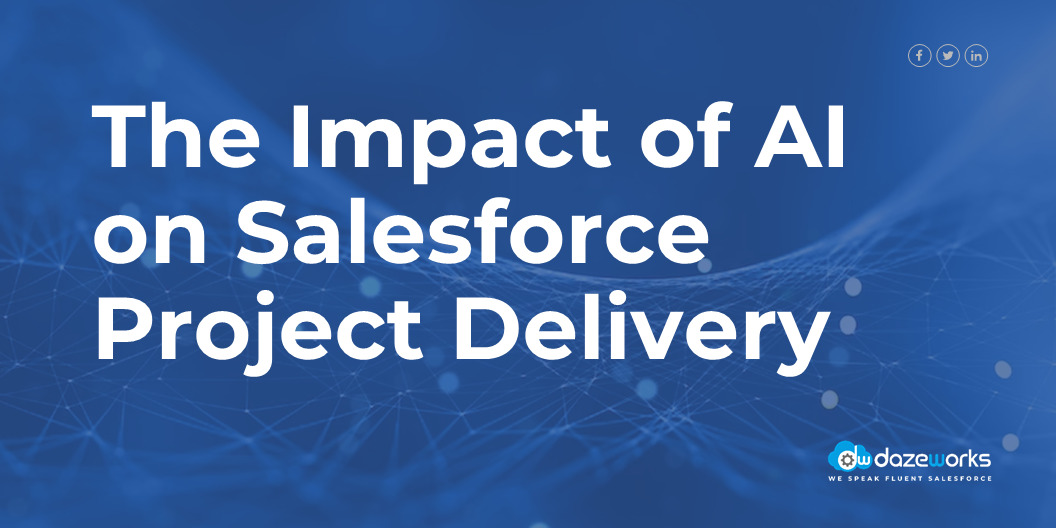
Posted by Pooja Pushpan
Artificial intelligence has always been a crucial aspect of the Salesforce organization. AI’s integration into Salesforce offers a range of benefits throughout the project lifecycle, from planning to execution and ongoing optimization. In this blog, we will delve into the potential that AI holds in ensuring successful Salesforce project delivery. Key Applications of AI in Salesforce Project Delivery Predictive Analytics: AI enables organizations to leverage historical data and patterns to make accurate predictions about future project outcomes. By analyzing past projects’ data, AI algorithms can identify potential risks, estimate resource requirements, and predict project timelines. This allows project managers to

Posted by Pooja Pushpan
Agile methodology is a flexible and iterative approach to project management that prioritizes customer satisfaction, collaboration, and adaptability to change. Its core principles revolve around frequent iterations, continuous feedback, and incremental development. These principles align seamlessly with the multifaceted nature of Salesforce projects, where requirements might evolve, and stakeholders’ needs can change throughout the development lifecycle. How Salesforce Projects Management can Benefit from Agile Methodology? Providing the Required Flexibility Salesforce projects often witness evolving requirements due to changing business needs or user feedback. Agile’s iterative nature accommodates these changes efficiently. It allows for continuous feedback loops, ensuring that modifications can

Posted by Pooja Pushpan
The success of any Salesforce project depends on how well you were able to align the delivery with the client’s requirements. While each project is unique, certain factors remain the same that define the success and failure of a project. Our goal is to highlight those factors that can help with successful Salesforce delivery. Put Yourself in the Client’s Shoes Before starting any Salesforce project, it is crucial to thoroughly understand the needs and requirements of the client. This involves conducting in-depth discussions, interviews, and workshops to gather all necessary information. During the discovery phase, you can know the company

Posted by Pooja Pushpan
Salesforce Mobile Publisher is a powerful tool that enables businesses to create custom-branded mobile apps using the Salesforce platform. It allows users to design, deploy, and manage mobile applications tailored to their specific needs without extensive coding knowledge. Let us dig deeper into what Salesforce Mobile Publisher entails and why you need it. What is Salesforce Publisher? Salesforce Mobile Publisher is an extension of the Salesforce Platform that facilitates the creation of custom mobile apps. It’s part of the broader Salesforce ecosystem, providing businesses with the ability to extend their Salesforce functionalities onto mobile devices. Why Use Salesforce Mobile Publisher

Posted by Pooja Pushpan
Technical debt is certain with evolving business, then why it is considered a bad thing? Technical debt becomes harmful to companies when not managed properly. As the debt continues to build, it can reach a point where it affects the development and user experience. This is why continuous debt management is imperative. What is Salesforce Tech Debt? Salesforce tech debt refers to the accumulation of suboptimal coding practices, configurations, and customizations in a Salesforce org over time. It can manifest in various forms, such as redundant custom code, inefficient workflows, outdated integration patterns, and poorly designed data models. These shortcuts







